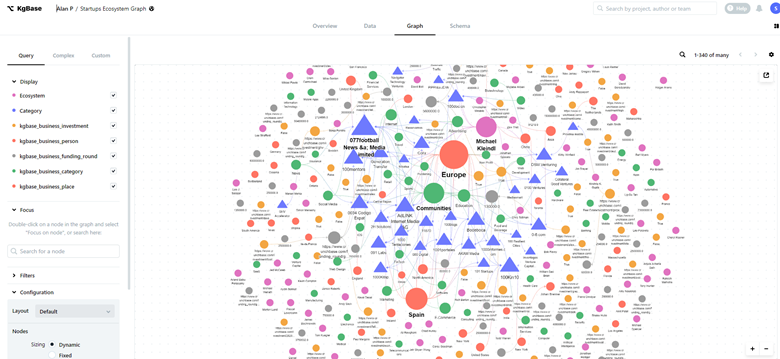Develop Open System Databases Quickly with the very best No-Code Tools Available
Develop Open System Databases Quickly with the very best No-Code Tools Available
Blog Article
Discover Exactly How Scalable Databases Can Be Made Use Of Without Coding to Improve Your Business Workflow
In today's hectic business environment, the capability to take care of and evaluate information successfully is vital. no-code. Scalable databases, especially when coupled with no-code services, supply a transformative method that equips non-technical customers to simplify operations.
Recognizing Scalable Databases
Scalable databases are important for modern service procedures, enabling companies to efficiently take care of boosting volumes of information without compromising performance. These databases are made to expand and adapt to the altering needs of a company, guaranteeing that they can manage bigger datasets and more complex inquiries as business requirements advance.
Understanding scalable data sources entails recognizing their 2 primary types: upright scaling and straight scaling. Vertical scaling, or "scaling up," includes adding more power (CPU, RAM) to an existing server to improve efficiency. Conversely, horizontal scaling, or "scaling out," involves adding a lot more servers to distribute the lots, which often results in greater flexibility and fault tolerance.
Another vital element is the design of scalable data sources, which can be either relational or non-relational. Relational databases, such as MySQL and PostgreSQL, are structured and use SQL for inquiries, while non-relational data sources, like MongoDB and Cassandra, supply more versatility with unstructured information.
Eventually, recognizing scalable databases is crucial for organizations aiming to utilize information as a critical property, allowing them to continue to be competitive in a progressively data-driven setting.
Benefits of No-Code Solutions
Opening the capacity of no-code solutions encourages services to enhance operations and boost efficiency without the need for considerable programs knowledge. These systems enable non-technical users to develop, modify, and handle databases effortlessly, thus democratizing accessibility to modern technology throughout teams.
One of the primary advantages of no-code services is their rate of execution. Businesses can rapidly deploy applications and automate processes, dramatically reducing the time invested in advancement cycles. This agility allows companies to react without delay to market adjustments and consumer demands, fostering an one-upmanship.
Additionally, no-code platforms decrease reliance on IT divisions for everyday tasks, enabling technical teams to concentrate on more intricate projects that need specialized abilities. This shift not just enhances source allowance yet also advertises innovation within the organization.
Cost-effectiveness is one more benefit, as no-code services can decrease growth and maintenance costs. By decreasing the need for coding expertise, companies can harness the abilities of their existing labor force without the overhead of employing additional employees.
Popular No-Code Data Source Equipment
The rise of no-code solutions has led to the appearance of various data source tools that deal with businesses looking for effectiveness and availability. These tools empower customers with restricted technical proficiency to develop, handle, and control databases perfectly.

Caspio stands apart for its ability to build web applications without any coding. It allows businesses to develop durable databases and release applications swiftly, catering read here to various sector requirements. Propensity provides straightforward interfaces and powerful data management capabilities, enabling organizations to construct personalized applications tailored to their operations.

Usage Situations in Company Procedures
Just how can services take advantage of data source devices to improve their operations? Scalable databases provide companies with effective abilities to handle and analyze information without the demand for substantial coding understanding. These tools can streamline various company processes, ultimately resulting in boosted performance and efficiency.
One popular use instance is client connection management (CRM) Businesses can make use of scalable data sources to track client interactions, preferences, and feedback, making it possible for individualized interaction and far better solution. By systematizing this information, teams can work together more properly and reply to customer needs in real-time.
One more significant application is inventory administration. Business can utilize no-code database tools to monitor stock degrees, track shipments, and projection demand. This makes certain optimum inventory degrees, decreases waste, and minimizes stockouts.
Furthermore, project monitoring can take advantage of scalable databases by allowing teams to manage look these up tasks, deadlines, and resources in an unified system. With real-time updates and information visualization, project supervisors can make enlightened decisions.
Starting With Implementation
Applying scalable data sources in company procedures requires an organized approach to ensure effective combination and usage. The initial step is to carry out a detailed demands assessment, determining particular organization demands, data types, and expected development patterns. This foundational understanding will direct the choice of the appropriate database option.
Next, pick a straightforward, no-code data source platform that straightens with your functional goals. no-code. Lots of explanation contemporary remedies offer intuitive interfaces, allowing non-technical users to manage data efficiently. After choosing a platform, establish a clear data design that details exactly how information will certainly be organized, accessed, and preserved
Training is critical; guarantee that employee are geared up with the needed skills to use the data source. Consider offering tutorials or workshops to familiarize personnel with the system's performances.
Verdict
In verdict, the assimilation of scalable data sources via no-code solutions presents significant benefits for service operations. Inevitably, leveraging these innovations can lead to improved productivity and functional performance, positioning services for continual growth in an affordable landscape.
One prominent no-code database device is Airtable, which integrates the capability of a spread sheet with the power of a database.Exactly how can businesses take advantage of database devices to enhance their procedures? Businesses can make use of scalable databases to track customer communications, choices, and feedback, enabling customized interaction and much better service.Executing scalable databases in service operations requires an organized technique to make sure successful integration and usage.In conclusion, the integration of scalable data sources through no-code options offers substantial benefits for business procedures.
Report this page